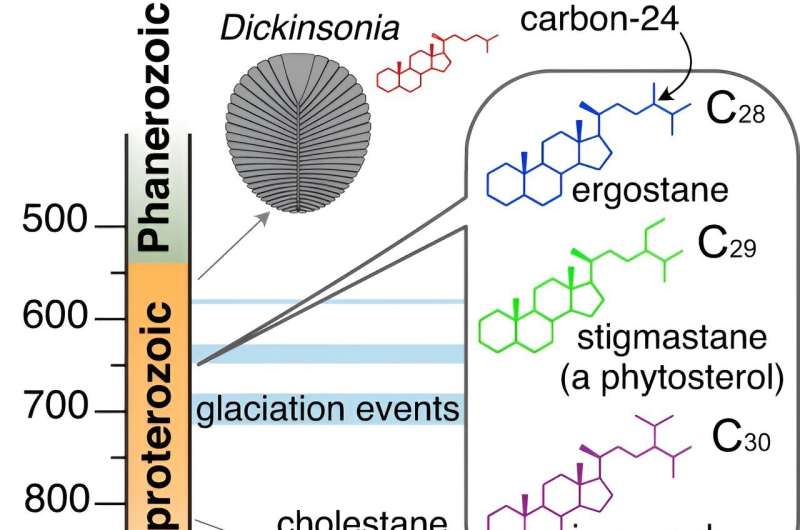This article has been reviewed according to Science X's editorial process and policies. Editors have highlighted the following attributes while ensuring the content's credibility:
fact-checked
peer-reviewed publication
trusted source
proofread
Molecular fossils study sheds light on feeding strategy shift in ancient life

Paleontologists are getting a glimpse at life over a billion years in the past based on chemical traces in ancient rocks and the genetics of living animals. Research published in Nature Communications combines geology and genetics, showing how changes in the early Earth prompted a shift in how animals eat.
David Gold, associate professor in the Department of Earth and Planetary Sciences at the University of California, Davis, works in the new field of molecular paleontology, using geology and biology tools to study life's evolution. With new technology, it's possible to recover chemical traces of life from ancient rocks, where animal fossils are scarce.
Lipids, in particular, can survive in rocks for hundreds of millions of years. Traces of sterol lipids, which come from cell membranes, have been found in rocks up to 1.6 billion years old. Currently, most animals use cholesterol—sterols with 27 carbon atoms (C27)—in their cell membranes. In contrast, fungi typically use C28 sterols, while plants and green algae produce C29 sterols. The C28 and C29 sterols are also known as phytosterols.
C27 sterols have been found in rocks 850 million years old, while C28 and C29 traces appear about 200 million years later. This is thought to reflect the increasing diversity of life at this time and the evolution of the first fungi and green algae.
Without actual fossils, it's hard to say much about the animals or plants these sterols came from. However, a genetic analysis by Gold and colleagues is shedding some light.
Don't make it, eat it
Most animals are not able to make phytosterols themselves, but they can obtain them by eating plants or fungi. Recently, it was discovered that annelids (segmented worms, a group that includes the common earthworm) have a gene called smt, which is required to make longer-chain sterols. By looking at smt genes from different animals, Gold and colleagues created a family tree for smt first within the annelids and then across animal life in general.
They found that the gene originated very far back in the evolution of the first animals and then went through rapid changes around the same time that phytosterols appeared in the rock record. Subsequently, most lineages of animals lost the smt gene.
"Our interpretation is that these phytosterol molecular fossils record the rise of algae in ancient oceans and that animals abandoned phytosterol production when they could easily obtain it from this increasingly abundant food source," Gold said. "If we're right, then the history of the smt gene chronicles a change in animal feeding strategies early in their evolution."
More information: T. Brunoir et al, Common origin of sterol biosynthesis points to a feeding strategy shift in Neoproterozoic animals, Nature Communications (2023). DOI: 10.1038/s41467-023-43545-z
Journal information: Nature Communications
Provided by UC Davis





















